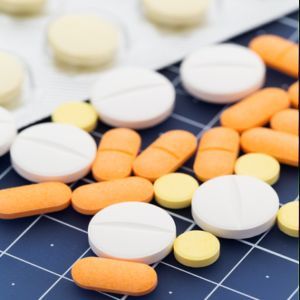Generic drugs are inexpensive when there is competition, but less so when conditions on the supply side of the generic-drug market hamper competition, which is exactly what’s happening in the wholesale drug industry, Devon Herrick, senior fellow at the National Center for Policy Analysis (NCPA), said.
Herrick is considered a
preeminent expert on 21st century medicine, including the evolution of
Internet-based medicine, consumer-driven health care and key changes in
the global health market.
“The wholesale drug industry has gone through tremendous consolidation in the past few years,” Herrick told American Pharmacy News. “Estimates vary, but three companies control more than 85 percent of the wholesale drug market.
“When there are so few firms that control such a large percent of the market, competition suffers,” particularly regarding prices, Herrick said. “If the market were more competitive, it would be harder for wholesalers to pass price hikes on to drugstores -- and ultimately to consumers.”
Drug wholesalers also have been accused of manipulating industry price lists to boost profit margins for themselves and pharmacies, Herrick said.
Herrick said that what he’s seen recently is pharmacy lobbyists at the state level try to lobby legislators to pass regulations that insulate their members from price changes by regulating maximum allowable cost (MAC) lists, which are a tool insurance companies use to place an upper limit on plan reimbursements for a given drug. When there is no price limit, pharmacies have little reason to hold costs down because they can pass on the higher costs to drug-plan members.
“Several states have passed or debated laws to regulate MAC lists -- in some cases requiring weekly updates or banning drugs from being on a MAC list unless the drug plans have verified there are two or three wholesale suppliers for that drug,” Herrick said.
“Regulations that insulate one party from the pain of competition don't benefit consumers in the long run,” Herrick said.
Unfortunately, “it's a little late for regulatory action” because the market already has consolidated; regulators should have scrutinized the mergers prior to the consolidation of the market, Herrick said.
But what regulators can do now is to be “vigilant to ensure there is no price fixing like occurred in years past,” Herrick said.
Additionally, state and federal regulators can work to make sure there is no abuse of benchmarks used to price drugs, Herrick said.
For example, Herrick said it is a well known fact that the average wholesale price is not the average wholesale price. “Many purchasers now use average acquisition cost, but regulators -- and state Medicaid programs -- need to be careful that this, too, is not manipulated,” Herrick said.
In the end, the way competition works is painful, but necessary, Herrick said.
“By that, I mean to really have competition in the marketplace, manufacturers need to compete with other manufacturers, wholesalers need to compete with other wholesalers to hold prices down, and retail pharmacies need to hold wholesalers accountable and shop around for the lowest wholesale drug prices,” Herrick said.
In addition, consumers and pharmacy-benefit managers (PBMs) “need to also drive a hard bargain,” Herrick said.








 Alerts Sign-up
Alerts Sign-up